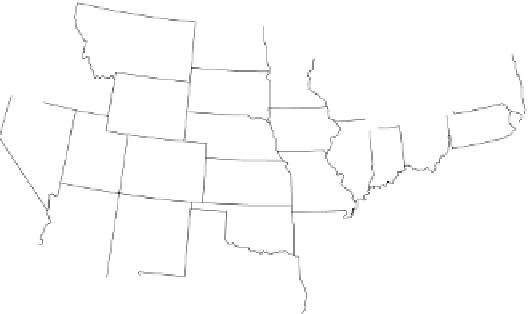Geography Reference
In-Depth Information
2.6.2.
Oil - a strategic dilemma
Alaska
0
50
0 km
Oil 2002
millions of barils
5
00 km
0
Production
Proven Reserves
550
2,750
5,500
Source: Statistical Abstract of the United States
Designed and made by JM Zaninetti, University of Orleans, CEDETE Institute
Figure 2.15.
Oil production and reserves in 2002
The extraction of petroleum began on the Appalachian plateau in 1859. Although
the geological conditions necessary for their formation are different, hydrocarbons
are generally found in the same sedimentary rock as coal (see Figure 2.15). Oil
extraction gradually spread to the West with the increase in demand that was
intensified by the automobile revolution of the 20th century. Domestic production
rose from less than 500 million barrels in 1920 to 3 billion barrels in 1940. Imports
remained negligible until 1950 because the discovery of huge oil fields in Texas,
Oklahoma, Kansas, Louisiana, and California appeared to provide the United States
with unlimited resources. While Germany and Japan struggled with fuel shortages,
the US had domestic resources that greatly aided the Allies' victory in the Second
World War. Since then, oil has been at the heart of American geopolitics, as well as
its geography. The oil industry had a much greater influence on the growth of
several of the sunbelt cities, including Los Angeles, Houston and Dallas, than





































































































